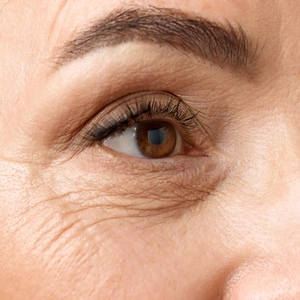Ptosis
Ptosis is a condition where your upper eyelid droops, sags or falls over your eye. The eyelid may just droop a little bit, or it may droop so much that it covers the pupil (the dark, round opening at the centre of your eye that lets light in). As a result, ptosis can limit or even completely block normal vision, depending on the severity.
Ptosis may only affect one eye (unilateral ptosis), or it may affect both eyes (bilateral ptosis). It can also occur in both children and adults, although the symptoms and causes vary slightly between each age group. If ptosis is present at birth, it’s known as congenital ptosis. If it’s developed later in life, it’s referred to as acquired ptosis.
Keep reading to discover the symptoms of ptosis as well as causes and treatment options with The London Clinic Eye Centre.
Ptosis symptoms
The most obvious sign of ptosis is a drooping eyelid. In many cases, this drooping goes unnoticed and doesn’t cause any other issues. However, if it is particularly noticeable, it can cover the upper visual field. Someone with ptosis may also tilt their head, lift their chin or raise their eyebrows to be able to see better. Over time, these movements can cause head and neck problems, and brow ache or headaches.
For example, if the eyelid droops so much that it blocks your vision, it can cause a lazy eye, where, due to lack of use, the nerve signals between the eye and the brain stop working or do not develop properly.
An individual with ptosis may also have astigmatism, a condition that causes blurred vision due to a misalignment of the front surface of the eye (cornea) and the lens inside the eye. Additionally, they may develop a squint, where one eye points ahead and the other is turned either inwards or outwards, up or down.
Someone with ptosis may also tilt their head, lift their chin or raise their eyebrows to be able to see better. Over time, these movements can cause head and neck problems.
Other symptoms of ptosis may include:
- excessively rubbing your eyes
- increased tearing
- reduced or impaired vision
- tired or achy eyes
- pain around your eyes
- dry eye
- watery eye
- headaches
Ptosis diagnosis
An ophthalmologist can diagnose ptosis by conducting a thorough eye exam. The exam may include different diagnostic tests, such as:
- slit lamp examination – which uses a high-intensity light to help your doctor take a closer look at your eye
- visual field testing – which measures how much you can see out of the corners of your eyes
- ocular motility (eye movement) test – where you’re asked to follow a moving object with your eyes
- tensilon test – during which a drug called tensilon (or edrophonium) is administered before your muscle strength is tested to check whether your eyelid droop is caused by ptosis or another condition
The aim of the exam is to try and find the cause of your ptosis, so that your doctor can recommend the most appropriate treatment.
Wondering if you might have ptosis? Book an appointment today at The London Clinic Eye Centre.
* We offer fast appointments Monday - Friday only.
Ptosis treatments
The treatment for ptosis depends on how much it’s affecting your vision. If it’s not affecting your vision at all, you might not need any treatment. In this case, you will just need regular check-ups with an ophthalmologist to ensure the condition isn’t progressing.
However, if your ptosis is severe, the treatment will depend on the underlying cause. If your ptosis is caused by another condition, the treatment will be targeted toward that condition.
On the other hand, if your ptosis is a result of ageing or the incorrect development of the levator muscle, your doctor may recommend eye drops or ptosis surgery (blepharoplasty).
Ptosis surgery
This procedure is performed under either a local or general anaesthetic, depending on your preference.
During ptosis surgery, the levator muscle is strengthened by tightening it.
Following the procedure, your eyelid will be swollen for a few days to a week or more, and there may be some bruising. You will also have sutures, which will need to be removed after a week.





